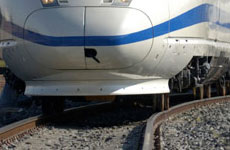
Categories
Publications
Path and train numbering. Interoperability using spatial analysis and INSPIRE
28/10/2014

Author/s: José Gómez Castaño
In this paper an algorithm to solve train path and numbering interoperability is proposed. The most powerful tool to achieve this is a threedimensional analysis of the train position, integrating information about its route and schedule in the same spacetime geometry. Also a study of the different data formats for exchanging information and OGC services available to do it, was carry out.
Due to the increasing number of Railway Undertakings and Infrastructure Managers involved in railway operations in Europe, how to designate the trains are different from one organization to another and from one state to another. Thus, one can find different designations for the same train depending on the use that is of the same, to find a common methodology to meet the equivalence between them is necessary.
A staple of the train is its route or path. This consists of the set of points where the train moves through sequentially, from its origin to its destination. The same route can be designed differently, and even each route section of their journey can be known differently by each organization and several trains can be merged to be identified by another organization.
The use of geospatial data over rail operation is a new recently open target. These allow to optimize decision making processes and make them more flexible compared to traditional solutions, complementing alphanumeric data, and incorporating new analysis capabilities and improving existing processes.
INSPIRE ANNEX I and its application to transportation networks, provides a framework for geographic features, so that it is possible to define a common way across the European Union, along with the RINF initiative.
The spatial databases are specialized in this type of data and are proving increasingly harder, as a powerful tool for the use of these data in the railway operation. In this work a methodology to associate different numbering a path or part thereof, and knowing the relationships between them, and an interoperable result is presented. The result allows to know the numbers associated with a train for each segment of its route within each organization that manages it and their relations with others.
Keywords: v
Publication: Vía Libre Railway Research Nº 8 - November 2014, pp. 101-119
Download paper »


